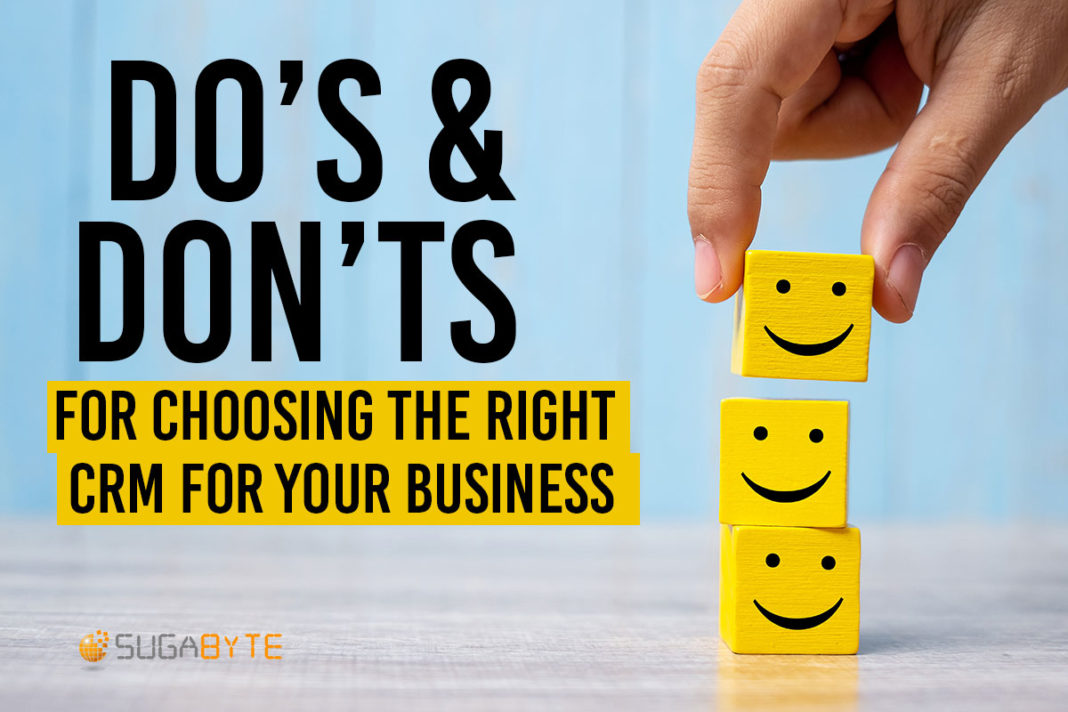Implementing the right CRM for your business can feel overwhelming with more than 7000 different systems to choose from. We know from experience that when a CRM correctly speaks to the needs of your business, it will serve as the cornerstone of your company’s customer relationship management, sales success, support and marketing efforts. To help narrow down your options, we have created a list of Do’s and Don’ts to help you with your search!
Do: Get Others Involved
If you’ve been assigned with the task of finding a CRM system for your business then I’m sure you’ve probably got an idea of the things you would like to get out of it, but what about everyone else? It is important in the early stages and throughout the process that you reach out to as many people in your organization that will likely be adopting the new system and find out what their personal requirements and objectives are. This procedure will not only help optimise every department by seeing the advantages and understanding the system but increase the user-adoption rate from your employees.
Don’t: Go Overboard
It can be exciting watching your ideas come to life, especially when it could mean you generate more revenue from it, however we recommend you think big but start small. It’s likely that your new system will change throughout the first few months or even years as you adopt this new way of working. A good way to start is by implementing your ‘must-have’ items first before moving onto the ‘nice-to-haves’, the reason behind this is to avoid bogging your CRM down with functionalities that you don’t need or won’t use. Your chosen CRM partner will help guide you through the build and make sure you stay on the path to success.
Do: Keep Communicating
You may have found the right CRM for your business but now you have to make it work for you. Communication with your Partner is key to ensure that your new CRM facilitates your processes and adapts to your unique business model and not the other way around. No one knows your business better than you do, so keeping your Partner up to date with clear and concise reviews of the system and your objectives will help you get the most out of your new system.
Don’t: Be Adverse To Work
Even for smaller implementations, there can be a fair amount of work that your business needs to prepare for. When an implementation of a new CRM is done properly, the results can be outstanding but sometimes especially in the early stages, return on investment can be a gradual process. Embrace the work towards your project with plenty of planning, calculation and training to hasten your success rate.
Do: Clean and Update Your Data
Your new customer relationship management system wants to reflect the changes you wish to make to the business. By updating your current data, you can ensure that the records you are working with support your future goals, accurately reflect performance and give you detailed, quality results so you can make more insightful decisions to better benefit your company.
Don’t: Get Stuck With Hidden Fees
Be sure to find a CRM provider that offers transparency when it comes to pricing particularly regarding subscription costs, service and support costs, user costs, implementation fees, training and add-ons. You can try to avoid surprise fees through research and asking questions but a safer option is always to go with a vendor who is upfront.
Do: Choose The Right Partner
First and foremost, your CRM implementation Partner needs to understand your business with an unmistakable comprehension of your business needs and requirements. Choosing someone with a consultative approach as opposed to a sales-driven outlook will greatly improve your chances of building a system that is accurate to you. For a streamlined process, choose a firm who are easy to reach and responsive, has a vision for your success and knows their solution inside and out. Is your CRM partner just looking to close a sale? Or are they looking to really help you succeed with your project and be a long-term technology partner? You’ll have to ascertain that, but the clues can usually be found.





